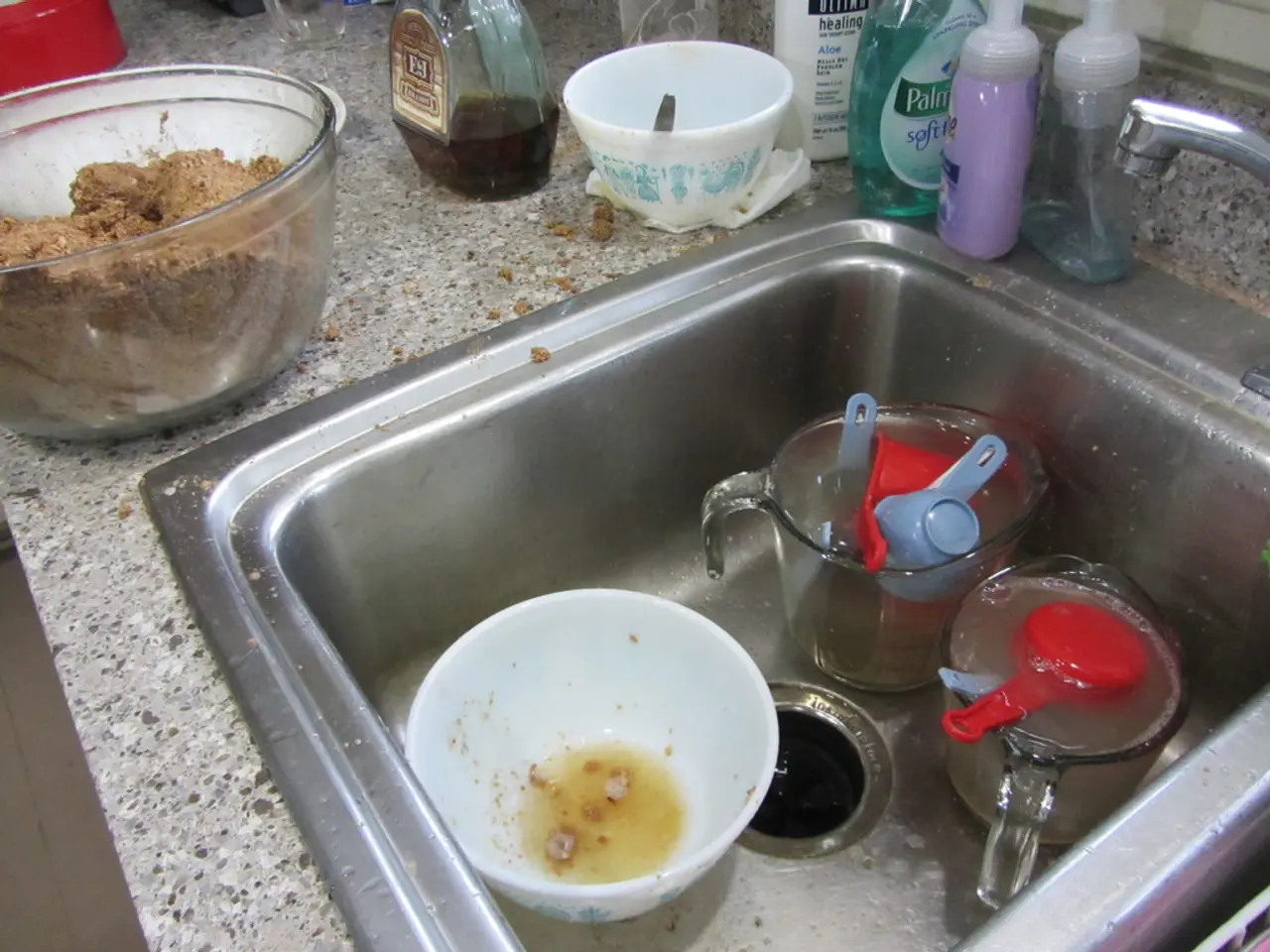Mystery Ailment Strikes Seven Kids in France, Claims One Life - Authorities Struggle to Identify Source
France faces a mystery as seven children hospitalized due to severe diarrhoea remain in critical condition, with the cause yet to be identified.
Hit 'Share' ➡️ Tweet ➡️ Forward ➡️ Email ➡️ Print ➡️ Copy Link
Seven minors from the northern French city of Saint-Quentin and its vicinity are currently hospitalized at the Saint-Quentin intensive care unit, battling a severe form of diarrhea. A heart-wrenching turn of events saw a 12-year-old succumb to this mysterious ailment, while four others developed an uncommon acute kidney failure [1][2][3].
The young victims, ranging from 1 to 12 years, received medical attention between June 13 and 18. The devastating sequence of events highlights the importance of public health vigilance and speedy intervention, as these diarrheal diseases can be highly contagious [1].
Authorities desperately race against time to pinpoint the cause and any hidden connections [4]. Initial hypotheses suggest a possible foodborne illness could be the culprit, yet the children don't seem to have dined together at any common location [2].
Amid the mounting anxiety, authorities are encouraging parents to act swiftly if they notice severe diarrhea in their children. Strict hygiene is emphasized, and cautionary suggestions include avoiding raw milk products, drinking only bottled or tap water, and steering clear of swallowing water while swimming in natural bodies of water [5].
With four cases of Hemolytic-Uremic Syndrome (HUS) reported in this outbreak, health officials are working tirelessly to uncover the underlying factors [1][3]. HUS is a life-threatening disorder that most frequently occurs in children following a gastrointestinal infection, leading to the formation of blood clots within the kidneys, brain, and heart [1]. On average, France records 100 to 165 cases of HUS among children annually [3].
In response to the ongoing investigation, Santé publique France and the Regional Health Agency (ARS) have launched a comprehensive probe. So far, no common food source has been detected, and tests have ruled out tap water contamination. The altercations have led local authorities to indiscriminately inspect and search food-related establishments [1][3][4].
Public health experts are carefully analyzing bacterial strains involved and scrutinizing meat handling practices and food supply chains, given the timing that coincides with increased consumption of fresh produce and meats in the summer months [3].
In summary, the situation in Saint-Quentin represents a complex puzzle for health authorities. They're dealing with a cluster of E. coli infections causing severe diarrhea and HUS in young children, with the exact source of contamination yet to be determined [1][3]. The tragedy of the 12-year-old's death reiterates the alarming potential consequences these diseases can have. As this situation unfolds, health officials continue their relentless pursuit to trace and shut down the source.
Enrichment data insights: This ongoing outbreak revolves around a mysterious ailment affecting seven children, with at least five developing Hemolytic-Uremic Syndrome (HUS). Four of these cases were reported in the city of Saint-Quentin, France. The outbreak began on June 12, 2025, with symptoms appearing between June 12 and 18. The victims experienced severe digestive symptoms such as bloody diarrhea and vomiting. The exact source of this outbreak remains unknown, and studies are underway to determine the bacterial strains involved [1].
- The urgency of adhering to community policy on sanitation and hygiene practices becomes evident when facing a mystery ailment such as this one.
- While authorities intensify their efforts to identify the source of the diagnosed E. coli cases, it's crucial for involved parties in vocational training to keep abreast of emerging health threats.
- As science advances and deepens our understanding of complex diseases, resilience in the workplace-wellness sector is required to adapt and respond rapidly to sudden health crises.
- Medical-condition screenings should be a priority for those involved in vocational training to ensure they're adequately equipped to handle challenging situations like the one in Saint-Quentin.
- As the investigation into the Saint-Quentin outbreak progresses, understanding and addressing chronic diseases like E. coli can inform improvedHealth and wellness policies.
- The urgency of addressing cance, respiratory conditions, digestive-health, and eye-health issues within the broader context of overall health and wellness cannot be understated.
- Fitness and exercise, including proper nutrition, play a pivotal role in bolstering the body's defenses against illnesses, such as the one that has struck the children in Saint-Quentin.
- Acknowledging that issues like sexual-health, autoimmune-disorders, mental-health, mens-health, and skin-care encompass vital aspects of human wellbeing, it becomes important to include them in all discussions on public health.
- The ever-evolving nature of neurological-disorders like dementia and Alzheimer's necessitates addressing aging-related health concerns to ensure appropriate care for our elderly citizens.
- Empowering women to take charge of their womens-health and wellbeing through regular check-ups, discussions, and education fosters greater awareness and allows for earlier detection of health issues in women and children.
- When it comes to family life, integrating parenting classes and resources within community initiatives could provide expectant parents the knowledge and skills they need to establish healthy habits from the start.
- Given the increasing global rates of obesity and weight-management concerns, equipping individuals with tools to maintain a healthy diet and lifestyle, such as through nutrition-focused vocational training, is essential.
- Cardiovascular-health initiatives should be prioritized to reduce the risk of heart disease, thereby preserving the quality of life for individuals of all ages.
- Bridging the gap between advancements in healthcare and accessible solutions, such as through the use of supplements like CBD, demands urgent attention and research to ensure benefits are substantiated and reaching those in need.
- As this complex and tragic situation in Saint-Quentin unfolds, investors and collaborators should provide support to further research on neurological-disorders, skin-conditions, and emerging general-news topics, like crime-and-justice and accidents, impacting public health and wellbeing.
- Beyond immediate medical interventions and therapies-and-treatments, a multidimensional approach focused on holistic Health and wellness should be prioritized, empowering individuals to take an active role in safeguarding their own health and strengthening their communities.








